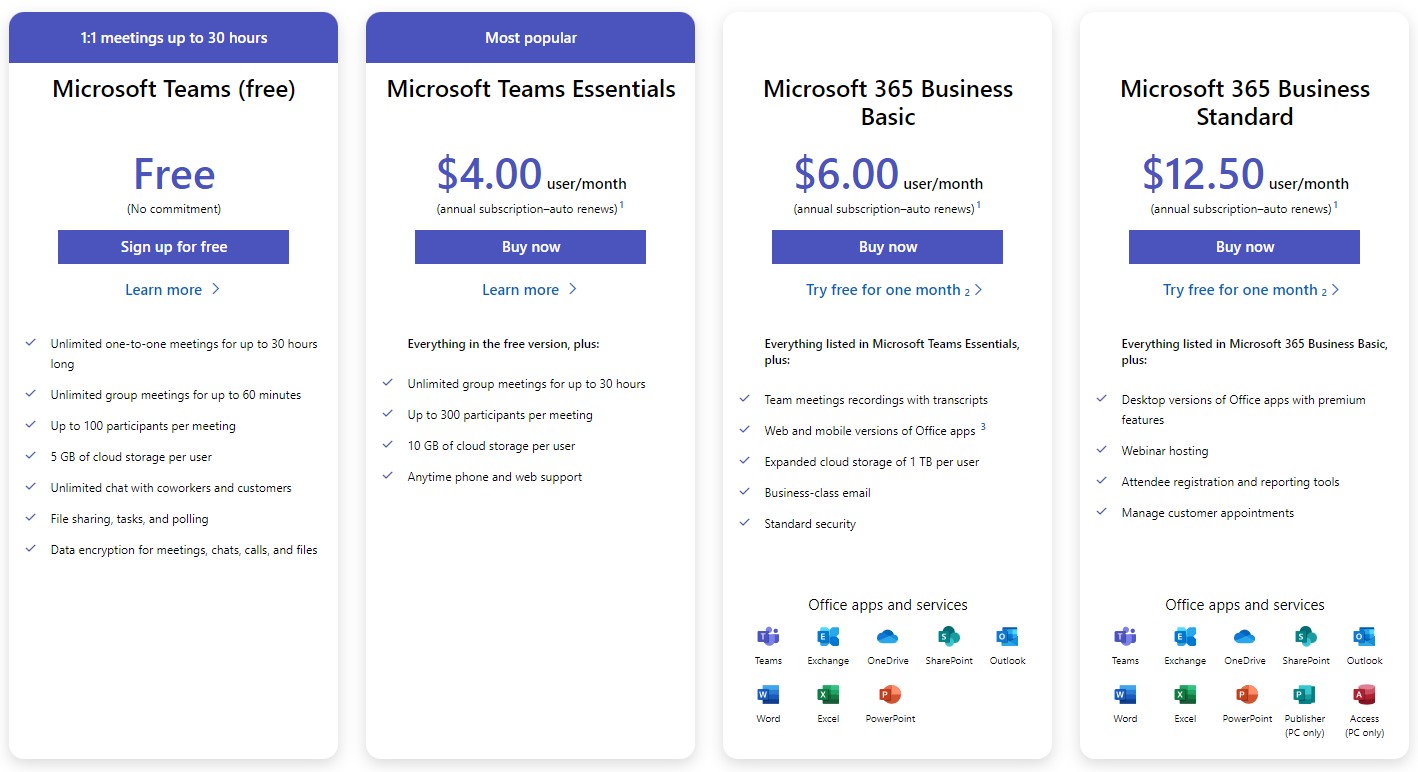Affiliate links on Android Authority may earn us a commission. Learn more.
Zoom vs Microsoft Teams: Which is best for you?

Remote work has become more common than ever. In addition, office desk jockeys often need video calling to contact co-workers and clients from afar. Many of you are probably debating whether you should go for Zoom vs Microsoft Teams, as they are among the most popular video calling apps for professionals. Let’s compare them and help you figure out which best suits your needs.
1. Zoom vs Microsoft Teams: Video quality

One of the most important factors to consider is video quality. You don’t want to look pixelated in your next presentation, so you will be happy to hear both Zoom and Microsoft Teams take advantage of up to 1080p video. Zoom is losing by a bit in this department, though, as 1080p is only available to Business and Enterprise plans, and it’s only activated “for selective use cases such as large-format broadcast events.”
Your hardware and data connection need to be up to the task. Luckily, most current internet connections far surpass developer recommendations. Microsoft Teams recommends a 2.5Mbps upload and 4Mbps download connection for high-definition group calls, while Zoom is a bit more demanding. Zoom recommends 3.8Mbps up and 3Mbps down for video calls at 1080p.
As for audio quality, it should mainly depend on your microphone. You should check out the SoundGuys list of the best USB microphones.
2. Zoom vs Microsoft Teams: Participant limits

How large your group is will highly influence your decision in the Zoom vs Microsoft Teams dilemma. Teams limits you to 300 viewers per meeting (100 for free accounts), but Microsoft 365 members can have up to 10,000 view-only participants.
Zoom Meetings’ free plan allows you to start video calls with up to 100 participants, but paying up can get that number up to 300. If you have a large company and require video calls with over 300 people, you can also pay extra to increase that number to 1,000.
3. Zoom vs Microsoft Teams: No account, no problem!

Both services can generate a unique link that can be shared with others to enter a video call. Meeting organizers can invite anyone, whether they’re Zoom or Microsoft Teams users. Once in the call, users can enjoy the complete set of features both services offer. This might be helpful if your co-workers don’t want to sign up for either.
4. Zoom vs Microsoft Teams: Other features

Zoom may have a slight edge over Microsoft Teams regarding video calling and conferencing. Both include screen share, meeting recording, cloud storing, a whiteboard, file sharing, joining via call, and more. On top of that, Zoom can offer participant connectivity details, people counting capabilities, a more user-friendly UI, and more.
Microsoft Teams has its strengths, though. While Zoom is primarily a video calling and meeting app, Microsoft Teams serves as a general chat and organization application similar to what we see in Slack or Discord. In addition, it has excellent integration with Microsoft’s 365 apps. These include all-time favorites like Word, Excel, and Powerpoint. Collaboration between teammates is a breeze when using Microsoft Teams. Many companies are already using these apps, giving Microsoft a significant advantage in the Zoom vs Microsoft Teams competition.
Also read: 10 Zoom Meetings tips and tricks you should know about
5. Zoom vs Microsoft Teams: Compatibility

Lucky for you, both Zoom and Microsoft Teams have excellent compatibility. Both can be used on Windows, macOS, Linux, Android, iOS, and even a web browser. As mentioned in the previous section, calling in via phone is possible. You have no excuses for missing that meeting!
6. Zoom vs Microsoft Teams: Security

Zoom uses end-to-end encryption, which means data is encrypted in your device, then sent privately and deciphered only when it reaches its destination. This is more secure than Microsoft’s in-transit and at-rest encryption, but Zoom has been in the spotlight for privacy concerns in the past. Despite privacy updates, improving encryption, adding the ability to disable personal meeting IDs, and fighting Zoombombing, the company couldn’t catch a break with over 500,000 stolen accounts sold online. Zoom had a rough 2020, but things are more stable now.
7. Pricing

Zoom’s free plan is great, but the 100 participants and 40-minute limitations might bog you down. Those who need more can opt for a paid monthly subscription.

You can technically get Microsoft Teams free, but its best features come with a Microsoft 365 account. The free version offers unlimited message search history, guest access, Office document collaboration, over 250 integrations, video calls, screen sharing, and customized backgrounds. Additionally, you get a 60-minute limit on free account video calls. Paying can grant you scheduled meetings, recordings, a phone system, more cloud storage, additional Office 365 apps, desktop versions of Office, and more.
Microsoft Teams can also get pricey, though. With Zoom, only hosts need to pay a monthly fee. Meanwhile, Microsoft Teams requires a monthly subscription payment per user. This can get heavy on your wallet if you need to get a large team into Microsoft Teams.

8. Which is better for you?

Zoom is a slightly better video-focused service for your meetings, calls, and conferences. You will enjoy a few added features, a more polished UI, and possibly lower prices.
Zoom’s base paid subscription is $14.99, but the free version is capable and comes with most premium features. Paying is convenient mainly for those who need video calls with over 100 participants or can’t deal with the 40-minute limit.
Microsoft Office integration could single-handedly win the battle between Teams and Zoom. Edgar Cervantes
On the other hand, Microsoft Teams beats Zoom in many areas, mainly because it offers a complete solution for your team’s organization, chatting needs, file transfers, and more. Think of it more as a hub instead of a video calling service. Not to mention Office integration, which could single-handedly win the battle between Teams and Zoom. Especially if your company is well invested in Microsoft’s apps… and many are. Just be ready to pay a pretty penny, especially for larger teams.
Which is best for small businesses?

Of course, the answer depends on what you consider a “small business.” Regardless, if you have a small business, you probably won’t go over the participant limits on either service. This means you have to make your choice considering other factors. Zoom is arguably cheaper, as you will have to pay only for the host. Additionally, security is arguably better, offering end-to-end encryption. This is important to those dealing with sensitive information.
Microsoft Teams might be a better alternative if you value Microsoft’s applications. You also get features like included cloud storage, business email support, and mode. All these added features might make Microsoft Teams worth the per-user fee.
Which is best for large businesses?

Zoom might be the better bet if you have a more serious large company that requires enhanced planning. After all, there are free alternatives to Microsoft Office apps, such as Google Drive. And if you have a lot of employees, Microsoft Teams’ per-user fee will add up. Only one user needs a paid account to host up to 1,000 viewers on Zoom.
Which is best for teachers?
Teachers need to save cash, and it doesn’t make sense to create (and pay for) accounts for every student. The choice is more obvious, and Zoom will likely be the best alternative. That is unless the class needs Microsoft’s apps. Or you could opt for the free Microsoft Teams alternative, but Zoom still has more features that better apply to the classroom. These include whiteboarding, hand-raising, collaboration tools, and more.
FAQs
It depends on your needs. Zoom paid plans start at $14.99 a month. Microsoft Teams pricing starts at $4 a month. There’s a huge difference in the pricing structure, though, as Microsoft Teams plans are per user. In the case of Zoom, only the host needs to pay.
Microsoft Teams plans include Office apps if you pay for the Microsoft 365 plans. These include applications like Word, Excel, Powerpoint, and many others.
Microsoft Teams seems to have the best free plan. It has a longer time limit of 60 minutes instead of 40 minutes. Otherwise, both offerings are very similar.
Zoom can handle as many as 1,000 participants. Microsoft Teams can handle as many as 10,000 view-only participants. The regular limit is 300 for both services.
Are you still not convinced with Zoom or Microsoft Teams? There are a few other great options to consider. Check out some more of our comparisons against Google Meet, Hangouts, Facetime, GoToMeeting, and others.